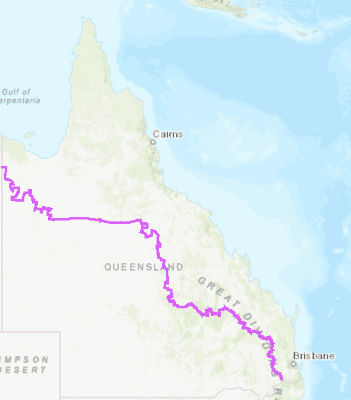UPDATES to cattle tick management rules in Queensland have been introduced to provide greater flexibility for producers moving stock across the cattle tick line, and to create opportunities for reduced travel times and costs.
 Under a risk-based cattle tick management framework introduced on 1 July 2016, part of Queensland is declared as a cattle tick free zone and the remainder as a cattle tick infested zone.
Under a risk-based cattle tick management framework introduced on 1 July 2016, part of Queensland is declared as a cattle tick free zone and the remainder as a cattle tick infested zone.
To protect the cattle tick free zone movement restrictions apply on high risk activities, such as moving livestock from the infested zone to a place in the tick free zone.
However updates to Queensland’s Biosecurity Manual introduced on July 4 provide more flexibility for carrying out low risk activities such as moving horses across the cattle tick line or livestock to feedlots and abattoirs.
The updates mean producers could minimise or possibly remove the need to chemically treat livestock immediately before movement from the cattle tick infested zone to an abattoir in the cattle tick free zone, Queensland Chief Veterinary Officer Dr Allison Crook said.
“This gives producers greater flexibility for carrying out low risk activities when moving cattle into the cattle tick free zone,” Dr Crook said.
“It has the benefit of reducing reliance on chemical treatments, meaning increased opportunities for organic beef production systems.
“Another benefit is improved animal welfare outcomes through the need for less handling of livestock.
“The update strikes a balance between maintaining the integrity of the cattle tick free zone, and allowing reduced restrictions for the movement of stock that pose a low risk of spreading cattle ticks.”
To assist producers and meat processing facilities meet their obligations when consigning and receiving stock, two new guides and a procedure about the new option have been released:
- Procedure for manual inspection – high risk tick carriers free of adult cattle tick
- Guide for meat processing facilities in the cattle tick free zone
- Guide for producers consigning cattle to meat processing facilities in the cattle tick free zone
To ensure that the cattle tick free zone remains cattle tick free, all other requirements under the Biosecurity Act 2014, Biosecurity Regulation 2016 and Queensland Biosecurity Manual remain in place.
- For more information on the Qld Govt website click here
- To download the full Queensland Biosecurity Manual (PDF) click here

Relaxing these movements is good for animal welfare, eating quality and opening up selling options for beef producers if heading straight to slaughter. However it also increases the risk of cattle tick outbreaks.
Our industry needs to consider a bigger picture.
The ‘Long Acting’ injectable products currently available make it possible to eradicate cattle tick all together.
A strategically planned approach should be developed and if it were industry driven, we could rid ourselves of this costly parasite forever.
This would allow unrestricted movement of cattle, open up the buying and selling options which currently exist for all classes of cattle, it would allow any producers anywhere to consider organic production, and reduce our dependence on live export. These ar just a few of the advantages of tick eradication.